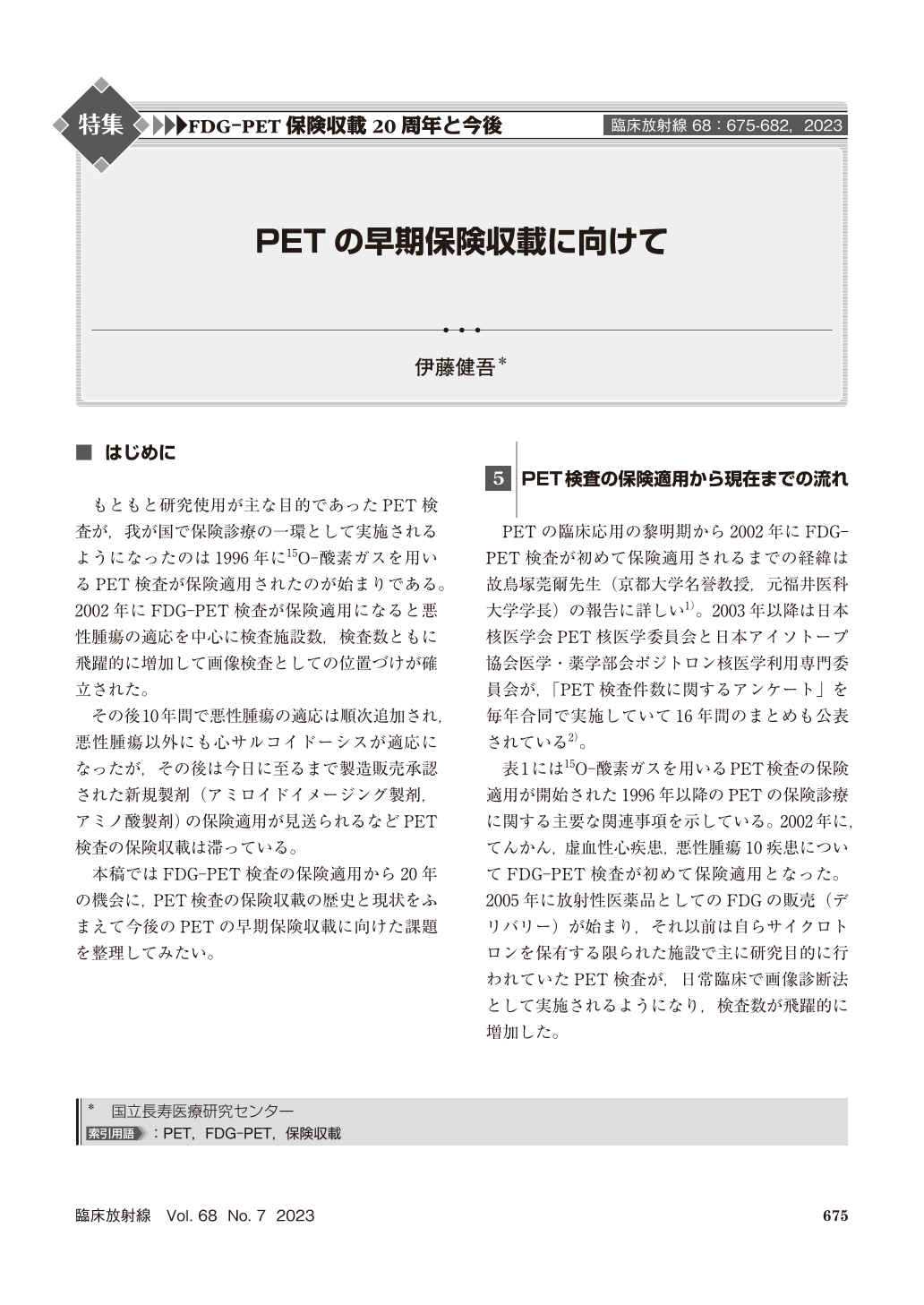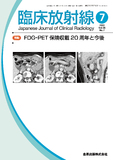Japanese
English
- 有料閲覧
- Abstract 文献概要
- 1ページ目 Look Inside
- 参考文献 Reference
もともと研究使用が主な目的であったPET検査が,我が国で保険診療の一環として実施されるようになったのは1996年に15O-酸素ガスを用いるPET検査が保険適用されたのが始まりである。2002年にFDG-PET検査が保険適用になると悪性腫瘍の適応を中心に検査施設数,検査数ともに飛躍的に増加して画像検査としての位置づけが確立された。
In Japan, PET scans were first covered by insurance in 1996, when PET scans using 15O-oxygen gas were covered. In 2002, FDG-PET scans were first covered for epilepsy, ischemic heart disease, and 10 malignant tumors. In 2005, FDG began to be marketed as a radiopharmaceutical, and the number of FDG-PET scans performed in clinical practice increased dramatically. Since then, insurance coverage for FDG-PET scans has steadily expanded, but coverage for FDG-PET for dementia and unknown fever has not yet been achieved. In addition, amyloid imaging agents and amino acid imaging agents that have already been approved for manufacture and sale as radiopharmaceuticals or radiopharmaceutical synthesis devices continue to be denied coverage.
One of the reasons for this is the unique hurdle for insurance coverage of PET scans:since insurance coverage for PET scans began as the procedure using in-hospital preparations, radiopharmaceuticals for PET scans have not been assigned an NHI drug price. Therefore, after approval for the manufacture and sale of a radiopharmaceutical or radiopharmaceutical synthesizing device, it is necessary to submit a request for coverage as a PET scan at the time of the biennial review of medical service fees.
In addition to demonstrating the superior diagnostic performance of the PET scan, the request for coverage by the academic societies must also include evidence of the overall impact of the PET scan on medical care, the impact of the PET scan on long-term prognosis, and the health economic impact. Because it takes a long time to accumulate this evidence, the accumulation of evidence may not be sufficient at the time of the coverage request.
In the U. S., a system called CED(Coverage with Evidence Development)provides reimbursement only when a patient is enrolled in an FDA-approved clinical trial designed to accumulate evidence. In Japan, there is a pre-reimbursement evaluation system called “advanced medical care” as a temporary measure before official reimbursement, but there is room to consider a system similar to CED.
For delivery-only PET radiopharmaceuticals, it is desirable to establish a reimbursement system that allows prompt reimbursement by setting an NHI drug price as a radiopharmaceutical, as is done for SPECT.

Copyright © 2023, KANEHARA SHUPPAN Co.LTD. All rights reserved.


